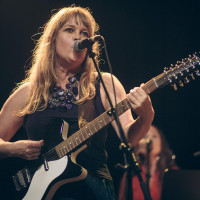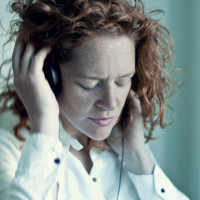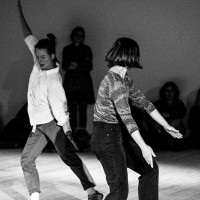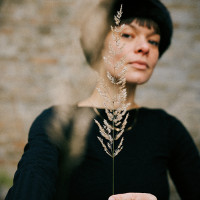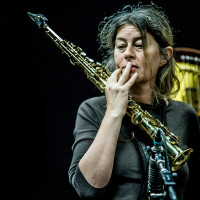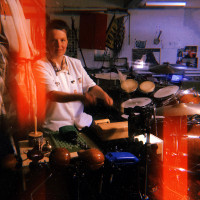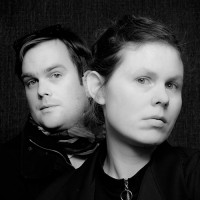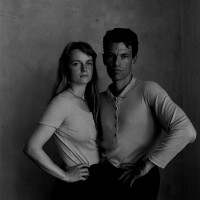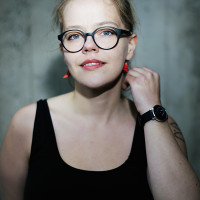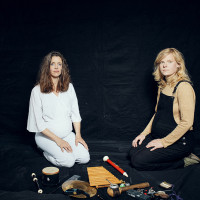»You look like 50% of the world's population, but are professionalised as a minority«
These are the words of Juliana Hodkinson in her essay for this special issue. We asked her and 11 other artists/artist groups how they experience gender playing a role in their artistic practice.
Many studies show today that composers, musicians and sound artists who identify as women are in the minority when it comes to representation on stages, festivals, museums, in academic research and music education. But even though there is an increased focus on gender and representation in the sound art and music industry, the experience of gendered expectations, and how these permeate everything from work practises to infrastructures in the sound art and music life, is still an under-illuminated field.
With this Focus, we want to draw attention to gendered expectations, infrastructures, technologies, working conditions and artistic work through 12 very different statements from artists in the field of experimental music and sound art. Later this year, six articles and audio papers will follow, going in depth with the themes already addressed in these contributions.
We agree with Judith Butler that sex is a social construction, not a natural state of being. Gender is something that is done or performed. Thus, when we use the word 'woman', we are not operating with a biological fundamentalism in relation to the understanding of gender. On the other hand, we see gender and here especially 'woman' as a 'messy' category, which refers to anyone who in their socio-cultural gender identity formation identifies as a woman, which can also be trans and minority gender. People who identify as women come in all shapes and sizes.
'Women's work' or 'women' is a commonly used term to signal a gender division of labor and especially the type of work that is often invisible and underestimated. In the context of this special issue, we would like to suggest to the reader that people who identify themselves as female sound artists and musicians are (still) in our historical contemporaries face professional barriers, discrimination and lack of recognition.
Why a Focus on Artists Who Identify Themselves as Women?
When we move into the minefield that gender work is today, it is to make structures visible and challenge the normative gender expectations. The British-Australian queer theorist Sara Ahmed writes that bodies are oriented and delimited by places. In this way, the places become the framework for bodily meetings and actions and set the agenda for which bodies can - can mean, act and be seen - and which can not. What can gender and bodies within the places where sound art and experimental music are practiced and navigated in? Do they have to have a value and a weight? Can they do as they please? Do they have to mean a similarity and a difference? What is the significance of gender? As Jomi Massage writes in her essay for this Focus:
»My gender is not. My body is not. My gender means. My body means. My gender does not matter. My body does not mean. My gender is. My body is. The mind. What creeps in, one day asked me to stop and find my opposite and through these find my own gender in my music. The sex that is enough in itself. The sex that speaks without resistance, about resistance, in resistance«
Several of the participating artists seek to challenge the places and frameworks of bodily actions, reflections, and soundizations without specifically addressing normative gender categories. However, they are often met by gendered expectations from the outside world, whereby gender nevertheless gains significance. This is made clear, among other things, by Anja Jacobsen from the band Selvhenter:
»It is most often in the meeting with the outside world, for example in a meeting with a journalist, that I experience that my gender matters. Here, in the band Selvhenter, we always get a question that relates to the fact that we are women. [...] I have also experienced irritation over the fact that what we have to talk to journalists about always relates to gender, and not just to the music itself. I would very much like to talk about the music and the thoughts behind it, and not spend all my time talking about gender.«
Our focus on gender expectations, infrastructures and technologies in this particular casedepends on what the Indian feminist and cultural theorist Gayatri Chakravorty Spivak has conceptualized as 'strategic essentialism', that is, a political strategy in which a (minority)group temporarily assembled and identified as a unit despite differences between them. The purpose is to be able to speak on behalf of a common 'we' and thereby make visible and over time the oppressive structures, such as sexism, gender inequality and gendered expectations, that this 'we' is confronted with. This is the starting point for our Focus where we create a place and a responsiveness to the important testimonies and reflections from artists, that primarily identify as women. In that sense, as editors, we are pursuing a critical feminist thinking that problematizes the existing structures in our desire to make visible some of the ways in which the infrastructure of music life is gendered, while at the same time highlightingthe diversity of composers, musicians and sound artists who identify as women.
We have chosen to call this Focus Sounding Women's Work because we want to put sound to the professional minority of artists who identify as women. We want to create horizons, show the versatility and the artistic weight that is often forgotten or more or less unconsciously deselected in history writing, teaching, research, museum exhibitions, shows and festivals, as the composer and writer Tine Surel Lange made clear was the case in for example in Nordiske Music Days in 2018, and as former Seismograph editor Sune Anderberg in 2020 showed in his review of the last five years of Copenhagen Phil's season programs.
With this Focus, we will shed light on what gender and gendered expectations mean for artists who identify as women. The contributions, which can be read here, are a rare opportunity to enter the engine room and learn about the artists' different conditions, practices, technologies, motivations, starting points, political motivations and aesthetic strategies.
Happy reading!
The editorial staff consists of
Kristine Ringsag, tenure track assistant professor, Department of Art and Cultural Studies, University of Copenhagen
Stina Hasse Jørgensen, postdoc, Affective Interactions and Relations Lab, IT University of Copenhagen
Agnete Seerup, project manager, JazzDanmark
Andreo Michaelo Mielczarek, editor-in-chief, Seismograph
